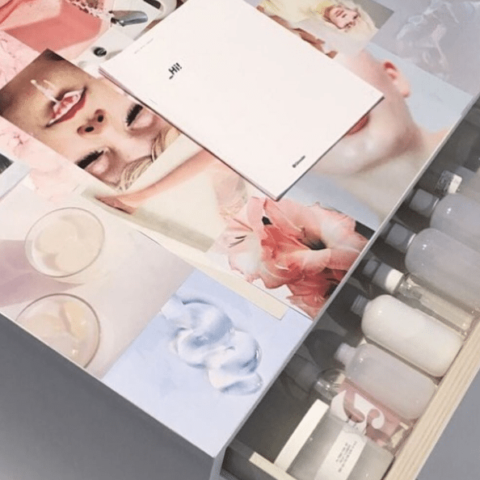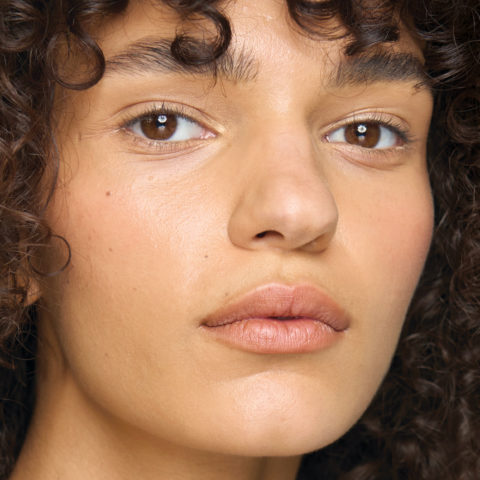Why So Many Beauty Brands Are Crowdsourcing to Create Products
Getting your hands on the beauty products and makeup looks you want is easier than it’s ever been. Want to learn to do an ombré lip? Watch one of 458,000 tutorials on YouTube (nope, that is not a made-up number). Have a certain product in mind? You can head to Sephora or the drugstore, or you can shop online, or you can use subscription services like Birchbox or Ipsy to try out samples until you find the one you want.
Still feeling unsure? Download an app like Makeup Genius to see how certain trends will look on you. Need to know what people think of a product? MakeupAlley is here for you. And finally, if all of that still isn’t giving you what you want, download Flawless Makeup and literally create your dream lipstick by snapping a pic of anything (a tree, your nail polish, whatever) and having a lipstick in the shade and finish you want, sent to your door.
As you can see, we’re swimming in options when it comes to beauty products. And many of our favourite makeup brands are recognizing that and using that to their advantage. Of course, we’re talking about crowdsourcing. Rather than throwing their hands up in the air and claiming that there are too many ways for customers to get just what they want elsewhere, existing beauty brands are reworking how they create products, by involving their loyal customers. So not only can we do all of the things we mentioned above, but now we can have a say in the ingredients of a product a brand is working on.
Case in point: Glossier (who btw, just started shipping to Canada!) In January of 2015, Into The Gloss founder and Glossier CEO Emily Weiss published a post called “What’s Your Dream Face Wash?” and the post got 385 comments, with people suggesting everything from seaweed extract to powder cleanser. Exactly a year later, the Milky Jelly Cleanser was born. The team gathered every comment and sent them all straight to their chemists. “There were key words like ‘mild,’ ‘glowy,’ ‘moist.’ That became the checklist for everything we wanted in the final product,” said Lindsey Manas, the brand’s Physical Product Coordinator. Glossier then followed the same process when creating a moisturizer. Both products are now, to the surprise of exactly no one, best-sellers for the brand.
Charlotte Tilbury took advantage of crowdsourcing to name two lipstick shades in a post simply called “Name My New Lipstick Shades,” where she showed her fans the two shades and asked them to suggest names on Instagram and Facebook. 7000 comments later, Tilbury released “Between the Sheets” and “Kiss Chase.”
“I choose the name Between the Sheets, named by my wonderful Instagram follower Audrey Lim, because it has a dreamy, Brigitte Bardot feeling to it,” said Tilbury. How’s that for a social media shout out? Process sound familiar? Kylie Jenner named her Lip Kit shade “Posie K” in the exact same way. Alicia Yoon of Peach & Lily launched #PLMaskLab, which encourages fans of the brand to comment and take questionnaires about the kinds of sheet masks they love, which ones they hate, and which they wish existed.
So why are companies giving us so much power? It makes us, the consumers, more likely to buy a product if we feel like we contributed to its creation. Why wouldn’t you want to buy a product whose ingredients or name you had a say in? It also closes the gap between consumer and brand, which is crucial in the digital age. It’s in the same vein as big-time brands tweeting you back when you have a question. It’s expected. And young people in particular are so much smarter about makeup and skincare than ever, because of the vast amount of information available. Seriously, have you taken a look at Facebook groups like Bunz Makeup Zone or All Things Beauty and Skincare? These college-aged kids sound like R&D experts! And don’t even get us started on the wonderful black hole of skincare subreddits. So of course beauty brands are expected to communicate with their fans, because their fans are communicating about them at a rapid pace.
Sure, it sounds like a lot of work, but what’s in it for you when it comes to crowdsourcing? Your dream products, of course.








